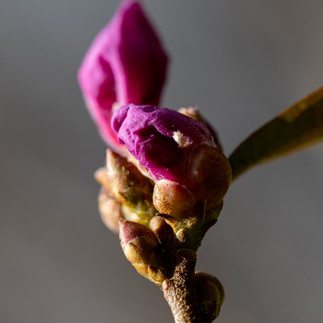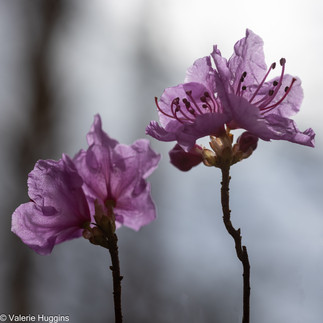Edge of Spring on Dartmoor's edge
- valeriehuggins0
- Mar 25
- 3 min read
Updated: Apr 4

As winter is turning into Spring, I returned to a familiar place, the beautiful Stone Lane Gardens, on the edge of the Dartmoor National Park. I had heard about a poetry event,
organised by Saving Devon’s Treescapes, a project led by Devon Wildlife Trust, but hadn't been organised enough to book a place. On the spur of the moment I decided to go anyway, thinking the worst that could happen was that I would be turned away. But when I arrived, I was given the warmest of welcomes by the leader Sarah. I soon found that it was a joy to be among this group of writers and poets.
The focus of the event was to learn about creating a Haiku, a short form of poetry that evolved in Japan hundreds of years ago. We wandered through the gardens, using our senses to generate impressions of the place. It was a typical early Spring on Dartmoor mix of chill wind, glimpses of sun and the threat of rain from the glowering grey skies.
The Devon poet, Chris Waters, gently guided us through the principles of Haiku poetry: three phrases, sometimes with a 5-7-5 pattern of syllables, with imagery to provoke emotion, a link with the season, being in the here-and-now. We critiqued some examples, before we constructed some of our own. And it was so much harder than I thought it would be! There were so many possible starting points and inspirations to draw upon that distilling the experiences of the morning into so few words was very tricky.
So, to help the writing process, I spent the afternoon wandering the gardens with my camera, looking for images that would meld with my words. The yellow daffodils and pink blossoms waved in the chilliest of winds, and there were even showers of hail. I had a real sense of being on the borderline of winter and spring. Exploring the boundaries and connections between poetry and photographing, on the edge of new ways of creating.
I looked for examples of being on the 'edge' of spring......
tiny catkins dance
evanescent gold and red
new life takes hold
Life clings on to the edge of the bark, such a beatiful array of patterns and colours:

There was a bush with some pink blossom on the edge of the pond, throwing delicate reflections on to the water. Combined with the reflections of the silvery trunks, the effect was very Japanese, fitting in with the haiku theme:
A change in the white balance added another dimension:

I played around with lots of 'boundary' words, trying to understand the ways in which it resonated with me. I thought about the constraints of routines, expectations and ways of being, and how sometimes being 'boundaried' helps me to feel safe, as if in a warm hug.

boundaried, hemmed in,
chill hail cuts through tender petals
smudged pink, bruised

spidery black twigs
scratch at the unwelcome grey sky
releasing silken light
ribbons of bark peel
blood red and orange fire tongues
curl at the edge

unanticipated smudge of pink
out of place
through a stripy bark frame

striped trunks stretch
making space for new rings
lost ribbons of bark quietly shed
and in response to my photos, my partner later joined in with the haiku fun too:

a splash of yellow
shaggy rugs on green fitted carpet
heads bob in greeting
solitary in the woodland
mossy picnic bench
longing for summer's attention

stripey silver birches
in the woodland
pretending to be zebras
strips of bark peel off
like the aftermath
af a two-year-old's birthday party
I have enjoyed this crossing of boundaries and combining photography with poetry. Called photopoetry, both the words and images can record a moment and evoke emotions, but keeping a balance between them can be tricky. I will carry on playing with haikus as I develop my creative photography.
NB: Saving Devon's Treescapes project: I was so shocked to learn that "There are around 1.9 million mature ash trees outside of woodlands in Devon with up to 90% of them predicted to be affected by ash dieback. Ash dieback is a fungal disease which originated in Asia and was first recognised in the UK in 2012. Sadly our native ash trees have no natural defence against it."
Robert Darch a local photographer has captured ash dieback in Devon's landscape and also the replanting efforts - 275,000 trees so far. Saving Devon’s Treescapes has created an Ash Archive – an emotional and artistic response to Ash dieback - and is open to contributions of art, writings and/or photographs.

















































Comments